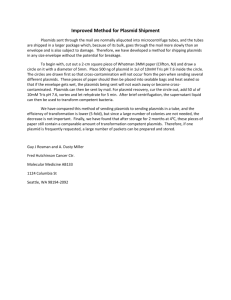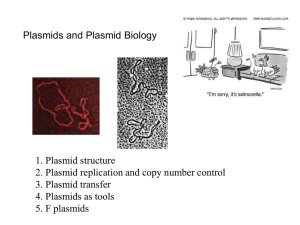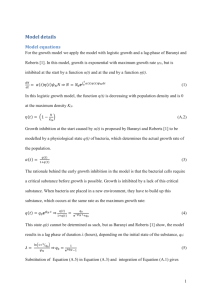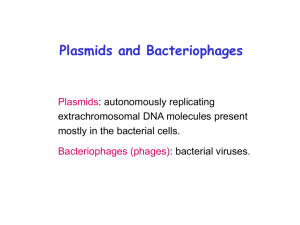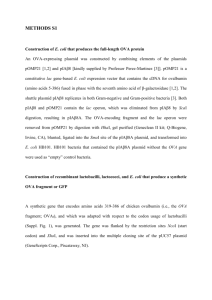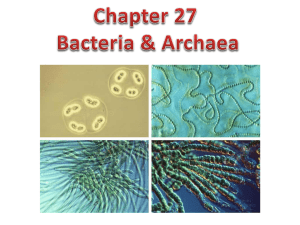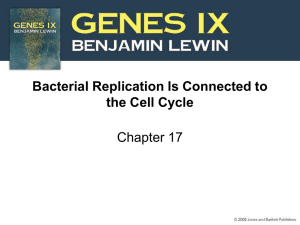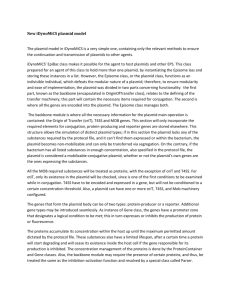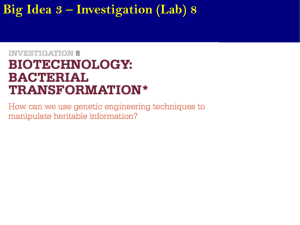plasmid
advertisement
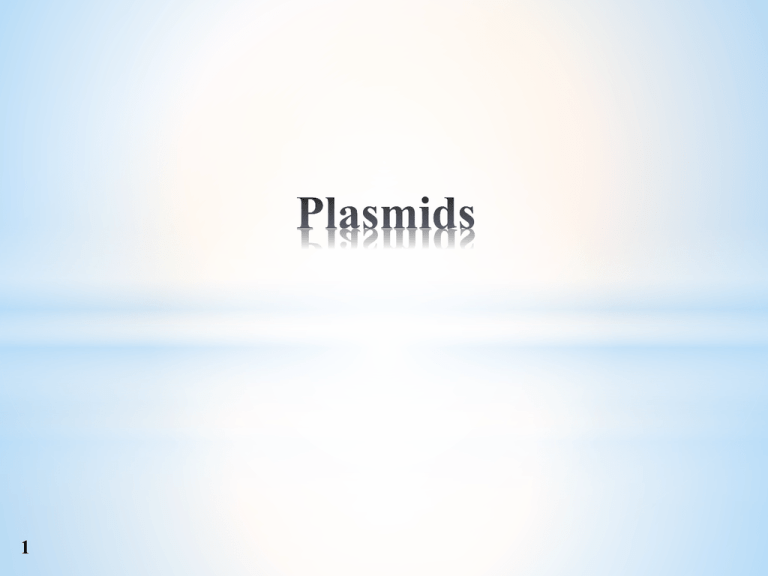
1 Antibiotic resistance The antibiotic resistance genes themselves are many and varied, ranging from plasmid-encoded betalactamases which destroy penicillins to membrane proteins which reduce the intracellular accumulation of tetracycline. Although plasmid-borne resistance to some drugs such as nalidixic acid and rifampicin does not seem to occur Colicins and bacteriocins One group of such proteins, produced by strains of E. coli, are capable of killing other E. coli strains, and are hence referred to as colicins, and the strains that produce them are colicinogenic (ColE1). Virulence determinants The previous chapter discussed how bacteriophages can carry genes that code for toxins and that the presence of the phage is necessary for pathogenicity 2 3 Plasmids in plant-associated bacteria A different type of pathogenicity is seen with the plant pathogen Agrobacterium tumefaciens, which causes a tumour -like growth known as a crown gall in some plants Again, it is only strains that carry a particular type of plasmid (known as a Ti plasmid, for Tumour Inducing) that are pathogenic; in this case however, pathogenicity is associated with the transfer of a specific part of the plasmid DNA itself into the plant cells. Metabolic activities Plasmids are capable of expanding the host cell’s range of metabolic activities in a variety of other ways. For example, a plasmid that carries genes for the fermentation of lactose, if introduced into a lactose non-fermenting strain, will convert it to one that is able to utilize lactose. Commonly the potentially pathogenic Salmonella genus is differentiated from the (usually) non-pathogenic E. coli species primarily because of the inability of Salmonella to ferment lactose. In some cases, the detection of serious epidemics of Salmonella infections has been delayed because the causative agent had acquired a lactose-fermenting plasmid. Biodegradation and bioremediation Another type of plasmid-mediated metabolic activity is the ability to degrade potentially toxic chemicals. One such plasmid, pWWO, obtained from Pseudomonas putida, encodes a series of enzymes that convert the cyclic hydrocarbons toluene and xylene to benzoate 4 Degradation of cyclic hydrocarbons 5 Molecular properties of plasmids *In many cases , they are quite small molecules, just a few kilo bases in length, but in some organisms notably members of the genus Pseudomonas, plasmids up to several hundred kilo bases are common *It is convenient to regard plasmids from E. coli as consisting of two types *first group, of which ColE1 is the prototype, are relatively small (usually less than 10 kb), and are present in multiple copies within the cell *The second group of plasmids, exemplified by the F plasmid, are larger (typically greater than 30 kb; F itself is about 100 kb) and are present in only one or two copies per cell 6 Partitioning of plasmids at cell division 7 Plasmid replication and control Unidirectional Replication 8 Plasmid replication and control Bidirectional Replication 9 Plasmid replication and control Rolling circle Replication 10 Replication of ColE1 Genetic map of the plasmid ColE1. colE1, imm: genes for production of, and immunity to, colicin E1; mob codes for a nuclease required for mobilization; rom codes for a protein required for effective control of copy number; ori T: origin of conjugal transfer; ori V: origin of replication 11 Structure and control of the origin of replication of the ColE1 plasmid. RNA II, after cleavage by RNaseH, acts as a primer for DNA synthesis. RNA I binds to RNA II and prevent RNase cleavage and hence prevents initiation of replication 12 13 Replication of R100 Genetic map of the conjugative E. coli plasmid R100. Resistance genes: cat, chloramphenicol (chloramphenicol acetyltransferase);mer, mercuric ions; str, streptomycin; sul, sulphonamides; tet, tetracycline. Other sites: oriT, origin of conjugative transfer; repA/ori V, replication functions and origin of replication. IS1, IS10 are insertion sequences, Tn10 is a transposon 14 *Replication control of the plasmid R100. The RepA protein is needed for initiation of replication. Transcription of repA is repressed by CopB and translation of the repA mRNA is inhibited by the antisense copA RNA 15 16 17 Coupling model for the control of iteron-containing plasmids 18
